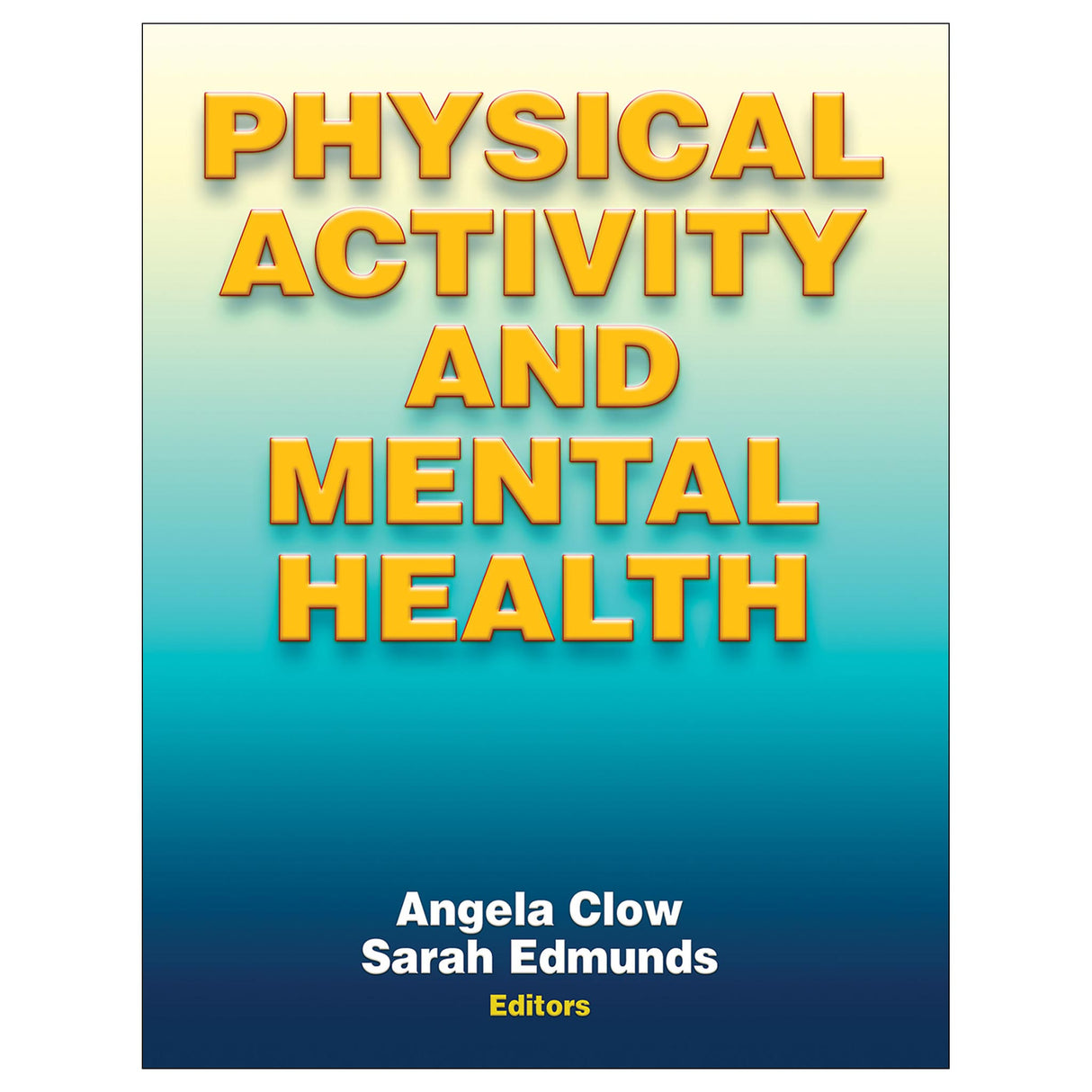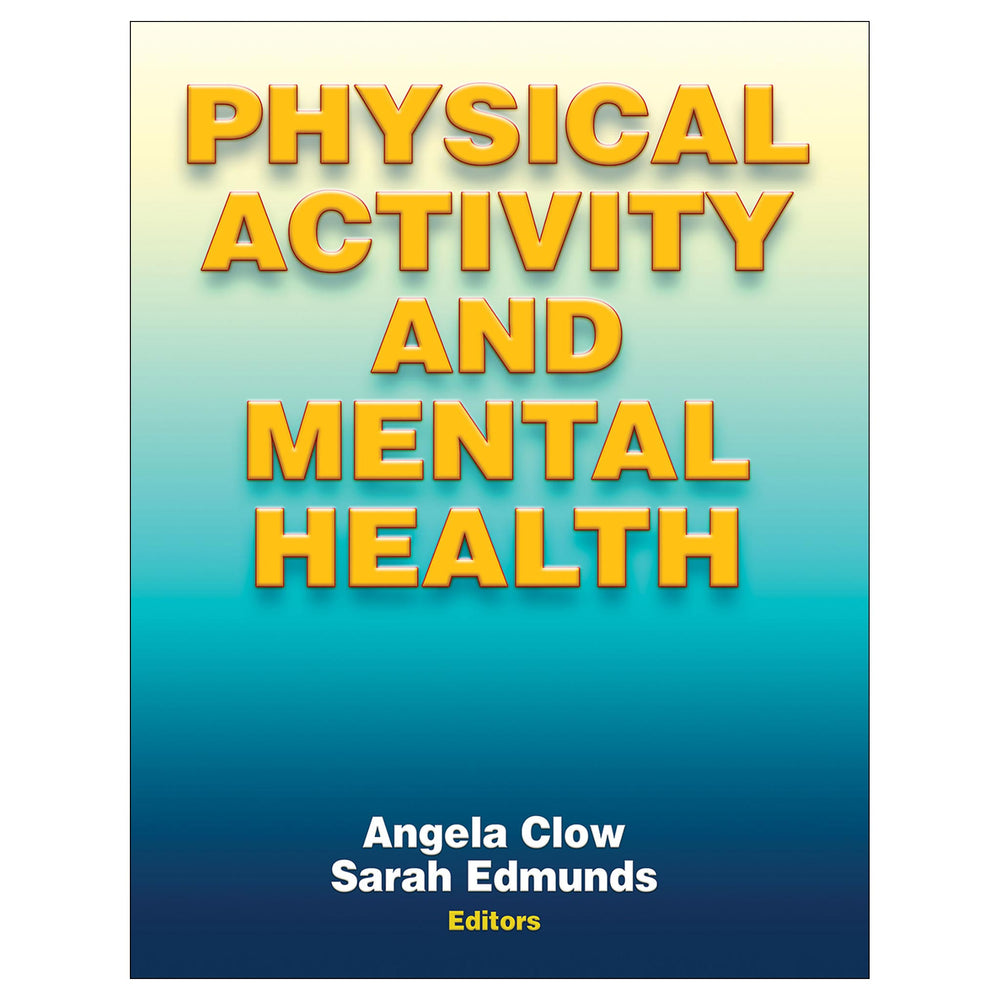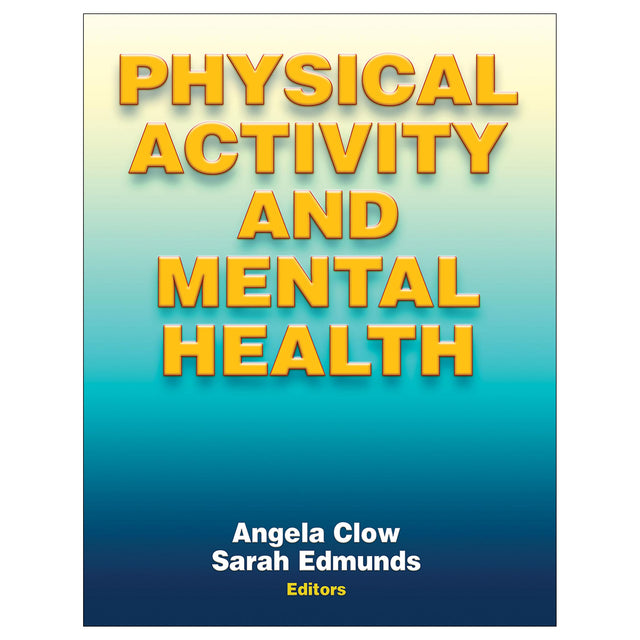Physical Activity and Mental Health PDF
Author: Angela Clow, Sarah Edmunds
$84.95 CAD
Access Duration: 10 Years
With contributions from internationally renowned experts, Physical Activity and Mental Health presents research illustrating how the use of physical activity can enhance well-being and reduce the impact of potentially debilitating mental health conditions. Written for students, researchers, and professionals in exercise science, fitness, and health care fields, Physical Activity and Mental Health details the factors that influence the relationship between mental health and physical activity as well as the benefits of physical activity in dealing with mental illnesses such as Alzheimer’s disease, depression, schizophrenia, and addictive behaviors. Readers will learn how promotion of physical activity can lead to a greater sense of well-being or act as a medical intervention. Exercise readiness checklists, mental health checklists, and population-specific sample activity plans assist in creating and implementing exercise programs to meet the needs of patients or clients.
Physical Activity and Mental Health begins with an exploration of the brain systems that are affected by physical activity and how these affect mental well-being. The text continues with discussion of the following topics:
• An overview of physical activity guidelines and the challenges in measuring physical activity in a mental health context
• How physical activity promotes well-being across the life span and among socioeconomic statuses
• How physical activity and exercise can improve quality of life and recovery in people with a range of mental and physical health conditions
• An examination of exercise dependence, including its relationship with eating disorders and body dysmorphia and the negative impacts of excessive exercise on mental health
Learning features in each chapter assist both the student and practitioner in learning and referencing the information. A chapter outline and an editors’ introduction provide an overview of the structure and content. Key concepts cover important ideas and definitions. Evidence to Practice boxes review current knowledge and theory from a perspective of practical application. Each chapter concludes with a summary and list of references, and additional highlight boxes throughout the text accent important topics.
Physical Activity and Mental Health integrates theoretical and applied approaches with practical tips on exercise programs, measurement strategies, and methodological considerations. Balancing theory and practice, this resource assists students, researchers, and practitioners in understanding the links between physical activity, well-being, and mental health and how to apply this information for the benefit of patients and clients across a range of populations and conditions.
Part I: Introduction to Physical Activity and Mental Health
Chapter 1. Relationship Between Physical Activity and Mental Health
Angela Clow, PhD, and Sarah Edmunds, PhD
1. Science of Well-Being
2. Relationship Between Well-Being and Mental Health
3. Physical Activity as a Complex Behaviour
4. Biological Foundations of Effects of Physical Activity on Mental Health
5. Summary
6. References
Chapter 2. Physical Activity Guidelines and National Population-Based Actions
Fiona Bull, PhD, and Adrian Bauman, PhD
1. Population-Based Approach for Promoting Physical Activity
2. Physical Activity Guidelines
3. Development of the First National Physical Activity Guidelines
4. Current Best Practice in Developing Guidelines
5. Global, Regional and National Physical Activity Guidelines
6. Implementation and Influence of Physical Activity Guidelines
7. Summary
8. References
Chapter 3. Challenges in Measuring Physical Activity in the Context of Mental Health
Natalie Taylor, PhD
1. Types of Measurement Information
2. Factors That Affect Method Choice
3. Challenges in Measuring Physical Activity in a Mental Health Context
4. Available Methods for Measuring Physical Activity
5. Summary
6. References
Part II: Factors Influencing the Interaction Between Mental Health and Physical Activity
Chapter 4. Social Class Relationships in Physical Activity and Mental Health
Mark Hamer, PhD
1. Inequalities in Social Health
2. Social Class and Exercise
3. Nature Versus Nurture
4. SES Mechanisms Linking Physical Activity and Health
5. Public Health Interventions
6. Summary
7. References
Chapter 5. Physical Activity and Self-Esteem
Magnus Lindwall, PhD, and F. Hülya Aşçı, PhD
1. Multidimensional Hierarchical Model of Self-Concept
2. Physical Self
3. Global Self-Esteem and Physical Self-Esteem Across the Life Span
4. Causality of the Relationship Between Physical Activity and Self-Esteem
5. Biopsychosocial Model of the Relationship Between Exercise and Physical Self
6. Implications for Practitioners and Researchers
7. Summary
8. References
Chapter 6. Effects of Overtraining on Well-Being and Mental Health
John S. Raglin, PhD, Gregory Wilson, PED, and Goran Kenttä, PhD
1. Paradox of Increased Training and Decreased Performance
2. Signs and Symptoms of Overtraining Syndrome
3. Treatment of Overtraining Syndrome
4. Prevalence and Susceptibility in Athlete Samples
5. Early Detection Using Physiological Measures
6. Early Detection Using Psychological Measures
7. Summary
8. References
Chapter 7. Physical Functioning and Mental Health in Older Adults
Donald H. Paterson, PhD, and Juan M. Murias, PhD
1. Physical Activity and Mortality
2. Physical Activity, Functional Abilities, Independence and Well-Being Into Older Age
3. Physical Activity, Cognitive Function and Mental Health in Older Adults
4. Physical Activity Guidelines for Older Adults
5. Aerobic Exercise-Training Interventions
6. Strength-Training Interventions
7. Exercise-Training Interventions and Cognitive Function
8. Exercise Programmes for Older Adults
9. Summary
10. References
Chapter 8. Impact of Physical Activity on Mental Health in Long-Term Conditions
Sarah Edmunds, PhD, and Angela Clow, PhD
1. Long-Term Conditions and Mental Health Issues
2. Long-Term Conditions and Quality of Life
3. Long-Term Conditions and Physical Activity
4. Chronic Obstructive Pulmonary Disease
5. Diabetes
6. Cancer
7. Summary
8. References
Part III: Physical Activity and Mental Health Conditions
Chapter 9. Depression and Anxiety
Amanda Daley, PhD
1. Evidence Linking Depression and Exercise
2. Exercise and Postnatal Depression
3. Exercise and Antenatal Depression
4. Exercise and Anxiety
5. Exercise for Treating Depression and Anxiety
6. Exercise Versus Conventional Treatment for Depression and Anxiety
7. Promoting Exercise in the Treatment of Depression and Anxiety
8. Summary
9. References
Chapter 10. Dementia and Alzheimer’s Disease
Juan Tortosa Martinez, PhD
1. Risk Factors and Pathophysiology for Dementia and Alzheimer’s Disease
2. Need for Interventions
3. Physical Activity and the Prevention of Dementia and Alzheimer’s Disease
4. Exercise Conditions Effective at Delaying the Onset of Dementia
5. Mechanisms by Which Physical Activity May Affect Dementia
6. Physical Activity for Attenuating the Progression and Symptoms of Dementia and Alzheimer’s Disease
7. Physical Activity Interventions in Dementia and Alzheimer’s Disease
8. Summary
9. References
Chapter 11. Schizophrenia
Guy Faulkner, PhD, and Paul Gorczynski, MA
1. Schizophrenia and Physical Health
2. Self-Report Physical Activity Measures in Schizophrenic Populations
3. Factors That Influence Physical Activity in Schizophrenic Populations
4. Physical Activity Interventions in Schizophrenic Populations
5. Promoting Exercise in the Treatment of Schizophrenia
6. Summary
7. References
Chapter 12. Addictive Behaviour
Michael Ussher, PhD
1. Links Between Physical Activity and Addictive Behaviours
2. Mechanisms Underlying the Role of Physical Activity in Treatments for Addiction
3. Physical Activity Interventions for Addictive Behaviours
4. Designing a Physical Activity Programme for Individuals With Addictions
5. Summary
6. References
Chapter 13. Exercise Dependence, Eating Disorders, and Body Dysmorphia
Brian Cook, PhD and Heather Hausenblas, PhD
1. Exercise Dependence
2. Eating Disorders and Body Dysmorphia
3. Impact of Exercise Dependence on Well-Being and Health
4. Relationship Between Exercise Dependence and Eating Disorders
5. Models of Exercise Dependence and Eating Disorders
6. Exercise in Body Dysmorphia
7. Strategies for Minimizing the Risk of Exercise Dependence
8. Summary
9. References





